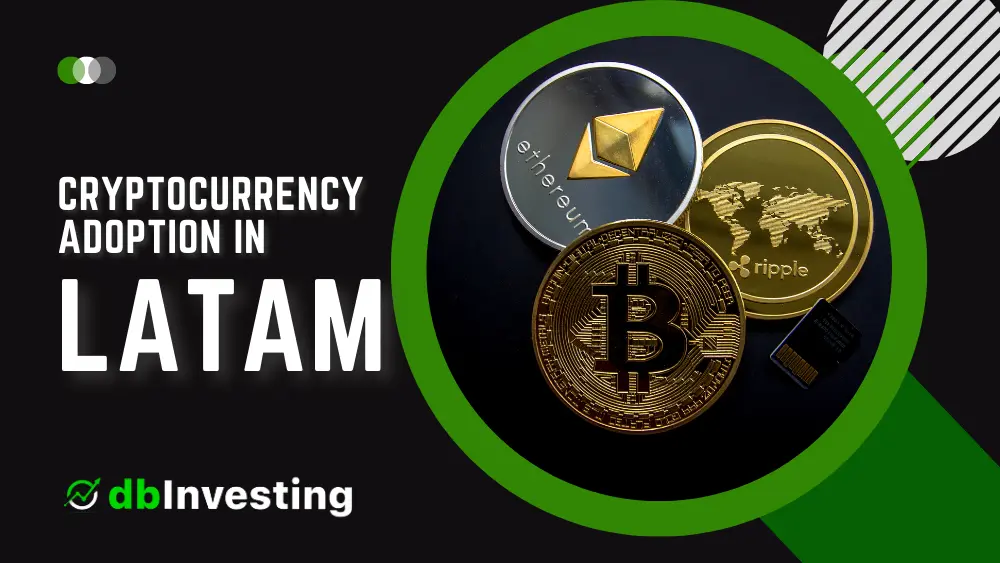Cryptocurrencies have gained significant attention and adoption worldwide in recent years, with Latin America being no exception. The region has shown a growing interest in digital currencies, fueled by factors such as hyperinflation, limited access to traditional banking, and a desire for financial inclusion.
This article explores the opportunities and challenges of cryptocurrency adoption in Latin America, the most popular cryptocurrencies in the region, and the factors affecting their adoption.
Current State of Cryptocurrency in Latin America
Latin America has been experiencing a steady growth in cryptocurrency adoption, with countries like Brazil, Argentina, and Colombia leading the way. According to a 2021 survey by Chainalysis, a blockchain data analytics firm, Latin America saw a 23% increase in cryptocurrency adoption in 2020, making it the fastest-growing region globally. The survey also revealed that the region had a higher adoption rate than Europe and the United States.
Factors Driving Cryptocurrency Adoption in Latin America
Hyperinflation
Hyperinflation has been a significant driver of cryptocurrency adoption in Latin America. Countries such as Venezuela and Argentina have experienced hyperinflation, leading to a loss of faith in their respective currencies. Citizens in these countries have turned to cryptocurrencies as a store of value and a hedge against inflation.
Limited Access to Traditional Banking
Many people in Latin America lack access to traditional banking services, either due to their geographic location or their financial status. Cryptocurrencies offer an alternative means of accessing financial services, allowing people to participate in the global economy and engage in international trade.
Financial Inclusion
Cryptocurrencies have the potential to promote financial inclusion in Latin America. By providing access to financial services, cryptocurrencies can help to reduce poverty, increase economic growth, and improve the overall well-being of citizens.

Most Popular Cryptocurrencies in Latin America
- Bitcoin (BTC)
Bitcoin is the most popular cryptocurrency in Latin America, with a market dominance of over 40%. Bitcoin has gained widespread adoption in the region due to its decentralized nature, high liquidity, and limited supply.
- Ethereum (ETH)
Ethereum is the second most popular cryptocurrency in Latin America, with a market dominance of around 20%. Ethereum’s popularity in the region is due to its smart contract functionality, which enables the creation of decentralized applications (dApps).
- Binance Coin (BNB)
Binance Coin is a cryptocurrency that is used to pay for fees on the Binance exchange, one of the largest cryptocurrency exchanges in the world. Binance Coin has gained popularity in Latin America due to the exchange’s user-friendly interface, low fees, and extensive range of trading pairs.
- Tether (USDT)
Tether is a stablecoin that is pegged to the US dollar. Tether has gained significant adoption in Latin America due to its stable value, which makes it an ideal means of storing value and facilitating international trade.

Challenges to Cryptocurrency Adoption in Latin America
Lack of Regulation
Cryptocurrencies are not yet regulated in many Latin American countries, making it difficult for businesses and individuals to navigate the legal and tax implications of using digital currencies. This lack of regulation also makes it difficult for governments to monitor and regulate cryptocurrency transactions.
Lack of Education
Many people in Latin America lack knowledge and understanding of cryptocurrencies, leading to a lack of adoption. There is a need for more education and awareness-raising campaigns to help people understand the benefits and risks of using digital currencies.
Volatility
Cryptocurrencies are known for their volatility, with prices fluctuating rapidly and often unpredictably. This volatility makes cryptocurrencies a risky investment and can discourage some people from adopting digital currencies.
Security Concerns
Cryptocurrencies are prone to security threats, such as hacks and fraud. As a result, many people are wary of using digital currencies, particularly those who are not familiar with the technology.
Lack of Infrastructure
Cryptocurrency adoption in Latin America is also hindered by a lack of infrastructure, particularly in rural areas. Access to the internet and technology is limited in many parts of the region, making it difficult for people to use digital currencies.
Opportunities for Cryptocurrency Adoption in Latin America
Financial Inclusion
Cryptocurrencies have the potential to promote financial inclusion in Latin America. By providing access to financial services, cryptocurrencies can help to reduce poverty, increase economic growth, and improve the overall well-being of citizens.
Remittances
Remittances are a significant source of income for many families in Latin America. Cryptocurrencies offer a cheaper and faster means of sending and receiving money across borders, making them an attractive alternative to traditional remittance services.
Investment Opportunities
Cryptocurrencies offer investment opportunities for people in Latin America, particularly in countries experiencing hyperinflation or political instability. Digital currencies can serve as a hedge against inflation and offer an alternative means of investment.
Lower Transaction Costs
Cryptocurrencies offer lower transaction costs compared to traditional banking services, making them an attractive option for small businesses and entrepreneurs. This can help to stimulate economic growth and promote entrepreneurship in the region.
Conclusion
Cryptocurrency adoption in Latin America is on the rise, driven by factors such as hyperinflation, limited access to traditional banking, and a desire for financial inclusion. Bitcoin, Ethereum, Binance Coin, and Tether are among the most popular cryptocurrencies in the region.
However, challenges such as lack of regulation, volatility, security concerns, and lack of infrastructure hinder the adoption of digital currencies in the region. Nevertheless, opportunities for financial inclusion, remittances, investment, and lower transaction costs present significant potential for the future of cryptocurrency in Latin America.



